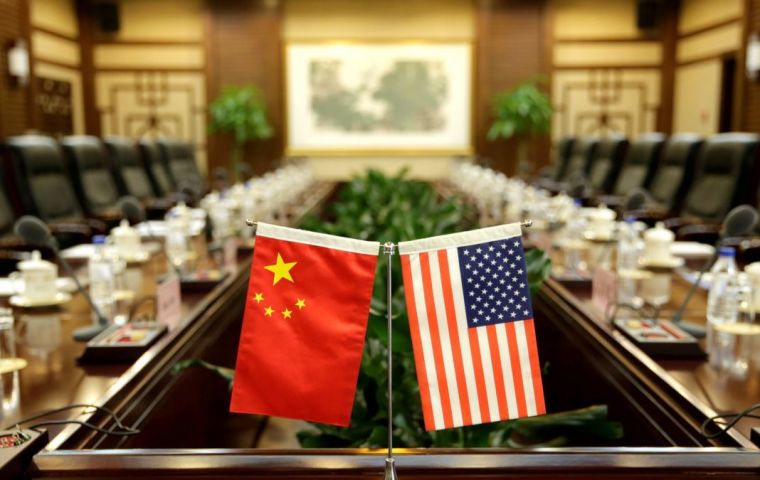MercoPress. South Atlantic News Agency
Despite trade talks, US and China will impose fresh tariffs beginning Thursday
 Tariffs come into effect as officials meet for talks in Washington. They are due to wrap up two days of negotiations on Thursday, but few hope for a breakthrough.
Tariffs come into effect as officials meet for talks in Washington. They are due to wrap up two days of negotiations on Thursday, but few hope for a breakthrough. United States and China are expected to impose fresh tariffs on US$ 16bn of each other's goods on Thursday as their tit-for-tat trade war rages on. The second round of tariffs will see a total of US$ 50bn worth of goods from each side that will now be taxed. Since the opening salvo in July, tensions between the world's two largest economies have escalated, hurting their companies and economies.
The tariffs come into effect as officials meet for talks in Washington. They are due to wrap up two days of low-level trade negotiations on Thursday, but few hope for a breakthrough.
US tariffs on US$ 16bn of Chinese goods will come into effect at 12pm Beijing time (0500 BST). The new 25% tax will affect nearly 280 Chinese goods, including chemical products, agricultural equipment, motorcycles and antennas.
China is expected to retaliate with its own 25% tariff on US$ 16bn of US goods including coal, medical instruments, cars and buses. The move will complete the series of tariffs on US$ 50bn of Chinese goods the US initially set out to tax.
Washington's plan to proceed with the fresh round of tariffs comes despite testimony to the US Trade Representative's Office by dozens of U.S. companies and industry groups that oppose the tax. Many said the new tax would hurt their businesses and warned that they would not be able to absorb another tax without raising prices for US consumers.
However, the US$ 16bn is a drop in the ocean compared to the amount Donald Trump has flagged could be hit with tariffs. The president said in July he was ready to tax all of the US$ 500bn worth of Chinese imports into the US.
United States has threatened a third round of tariffs on an additional US$ 200 billion of Chinese goods and they could come as soon as next month. It has since said those products could be hit with a 25% levy - more than double the 10% originally planned.
China has said it would respond with a new tariff on another US$ 60bn of US goods. But it would be harder for Beijing to match the US threat because its manufacturers export far more products than American businesses send to China.





Top Comments
Disclaimer & comment rulesCommenting for this story is now closed.
If you have a Facebook account, become a fan and comment on our Facebook Page!